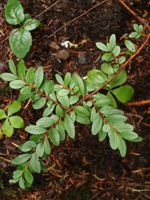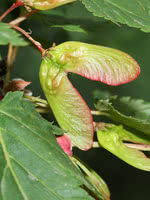Mon-Fri 9am - 5pm Mountain time
Douglas Maple vs Falsebox
Paxistima myrsinites
Acer glabrum
CUSTOM GROW
CUSTOM GROW
Falsebox is a hardy, native evergreen shrub found in forests, rocky slopes, and open woodland sites. Though small and easily overlooked among the leaves, the maroon flowers still supply nectar and pollen for pollinators such as native bees and flies. Blooming in spring, they provide an important early-season food source. Its year-round greenery adds visual interest through the winter.
Falsebox is a low-growing shrub that tolerates a wide range of conditions, including drought once established. It thrives particularly well beneath the shade of mature trees, where few other plants succeed. With its resilience and ecological value, Falsebox is well-suited for naturalization, restoration projects, and diverse landscape plantings.
Douglas Maple is a fast growing, long lived, ornamental tree. It can take on a shrubby or multi-stemmed form with densely packed leaves, making it an excellent tree for privacy screens and hedges.
In the fall, the leaves make a brilliant change to red, orange, or yellow depending on the tree and its sun exposure. Douglas Maple's compact size makes it ideal for planting in urban yards and under power lines.

